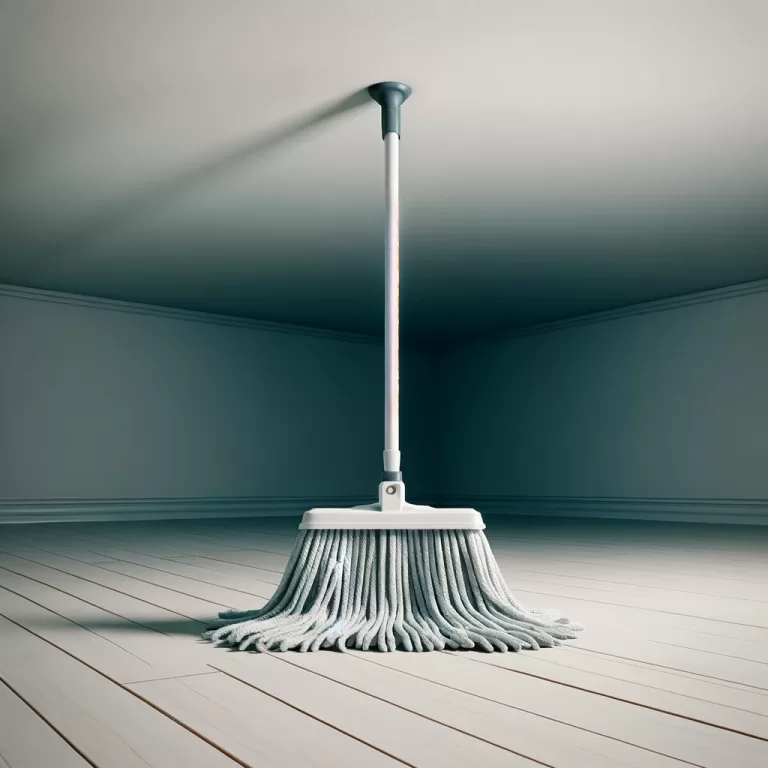How to Remove Deck Stain Effectively: Techniques, Tools, and Tips for a Clean Finish and Deck Restoration
Removing deck stain is a crucial step if you’re looking to restore or refinish your outdoor wood deck. Over time, stains can wear off unevenly, leaving behind patches, discoloration, or a dull appearance. To get the best results when applying a new stain or sealant, it’s essential to completely remove the old stain first. In this article, we’ll guide you through the best techniques for removing deck stain, including professional tips, recommended tools, and ways to avoid damaging the wood. Whether you’re dealing with oil-based, water-based, or semi-transparent stains, this comprehensive guide will help you achieve a clean, bare surface ready for refinishing.

Why Remove Deck Stain Before Refinishing?
The Importance of a Clean Surface for Staining
When it comes to refinishing a deck, the preparation stage is just as important as the application of the new stain. Removing old stain is necessary because applying new stain over an uneven, dirty, or partially stained surface can result in poor adhesion, uneven coloration, and a finish that won’t last. Old stains can also block new finishes from properly penetrating the wood, leading to peeling, bubbling, or premature fading.
A clean, bare wood surface ensures that the new stain absorbs evenly, providing a smoother and longer-lasting finish. Skipping this crucial step can lead to a poor end result, costing time and money in the long run.
Common Mistakes When Refinishing Without Removing Old Stain
One of the most common mistakes homeowners make is applying new stain directly over the old stain without properly stripping or sanding the surface. This can result in:

- Blotchy Appearance: The new stain won’t cover old stains uniformly, leading to an uneven, unattractive finish.
- Reduced Durability: Without proper surface preparation, new stain may fail to bond effectively, reducing its lifespan.
- Wood Damage: Leaving layers of old stain can trap moisture, leading to rot, mold growth, or decay underneath the surface.
Understanding Different Types of Deck Stains
Knowing what type of stain is currently on your deck is crucial for choosing the right removal method. Different types of deck stains react differently to removal processes.
Oil-Based vs. Water-Based Stains
- Oil-Based Stains: These stains penetrate deeply into the wood fibers, providing long-lasting protection. However, they can be more challenging to remove, often requiring stronger chemical strippers or repeated applications.
- Water-Based Stains: Easier to remove compared to oil-based stains, these products tend to sit on the surface of the wood rather than deeply penetrating it. A good pressure wash or mild deck stripper usually works effectively for water-based stains.
Semi-Transparent vs. Solid Stains
- Semi-Transparent Stains: These stains allow some of the natural grain of the wood to show through and are easier to remove. A chemical stripper or pressure washer typically works well.
- Solid Stains: These stains act more like paint, forming a thick layer on top of the wood. They require more effort to remove, often needing a combination of chemical stripping, sanding, and pressure washing.
How Each Stain Affects the Removal Process
Solid stains and oil-based products will generally require more aggressive stripping techniques, including multiple rounds of stripping, while semi-transparent and water-based stains can be removed more easily with a pressure washer or a single round of chemical stripper.
Tools and Materials Needed to Remove Deck Stain
To successfully remove deck stain, you’ll need the right tools and materials. Here’s a list of the essentials:

Chemical Strippers and Deck Cleaners
A deck stain stripper is a chemical solution that breaks down the old stain, making it easier to scrub or wash away. Look for products specifically formulated for the type of stain you’re removing (oil-based or water-based).
- Recommended Products:
- Citristrip Paint and Varnish Stripper (Eco-friendly)
- DEFY Exterior Wood Stain Stripper (Ideal for water-based stains)
Pressure Washers
A pressure washer can be an excellent tool for removing deck stains, especially for water-based stains or stains that are starting to wear off. However, it’s crucial to use the correct pressure to avoid damaging the wood.
- Recommended Pressure:
- 500-600 PSI for softwoods (like cedar or redwood)
- Up to 1,200 PSI for harder woods (like Ipe or mahogany)
Hand Scrapers, Sandpaper, and Brushes
For stubborn or heavily stained areas, manual tools may be needed:
- Hand Scrapers: Useful for peeling off thick layers of solid stains.
- Sandpaper: Use a coarse grit (60-80) for initial sanding and a finer grit (120-150) for finishing.
- Brushes: Stiff-bristle brushes work well for scrubbing after applying a deck stripper.
Step-by-Step Guide: How to Remove Deck Stain Effectively
Now that you’re familiar with the tools and materials required, let’s walk through the step-by-step process of removing deck stain.
Preparation: Safety and Environmental Considerations
- Protect Nearby Areas: Use plastic sheeting to cover plants, siding, and other surfaces that could be affected by chemicals or debris.
- Wear Protective Gear: Chemical strippers can be harmful. Wear gloves, safety goggles, and a mask to protect yourself from fumes and skin contact.
- Check Weather Conditions: Perform stain removal on a dry, windless day to ensure the chemicals don’t dry too quickly or get blown away.
Using a Chemical Deck Stripper
- Apply the Stripper: Using a brush or roller, apply the deck stain stripper evenly across the deck. Be generous, as a thick coat helps break down the stain faster.
- Allow Time to Sit: Let the stripper sit for 15-30 minutes, depending on the product instructions. You’ll notice the stain starting to lift and bubble.
- Scrub or Rinse Off: Use a stiff brush to scrub away the stain, or rinse it off with a hose or pressure washer.
Pressure Washing Techniques for Stain Removal
- Adjust the Pressure: Set the pressure washer to the appropriate PSI for your wood type (refer to the recommendations in the tools section).
- Wash in Sections: Start at one end of the deck and work in small sections. Hold the nozzle at a 45-degree angle and 8-12 inches from the surface to avoid gouging the wood.
- Rinse Thoroughly: Ensure all chemical residue is washed away before moving to the next step.
Sanding the Deck for a Smooth Finish
- Start with Coarse Grit: Once the deck is dry, use a belt sander or orbital sander with 60-80 grit sandpaper to remove any remaining traces of the old stain.
- Switch to Fine Grit: Finish with 120-150 grit sandpaper to smooth the wood and prepare it for a fresh stain application.
Inspecting the Wood and Preparing for Refinishing
Once the deck is completely stripped and sanded, inspect the wood for any signs of damage, such as cracks, splinters, or areas of rot. Repair these areas as needed before applying the new stain.
Troubleshooting Common Challenges
Even with proper preparation, you may encounter challenges during the stain removal process. Here’s how to handle some common issues:

Removing Stubborn or Thick Stains
For particularly thick or old stains that don’t come off after the first round of stripping, you may need to reapply the stripper and scrub again. In extreme cases, sanding may be the best solution.
Dealing with Mildew, Mold, or Rot on Your Deck
Mold and mildew can sometimes be mistaken for leftover stain. Clean the affected areas with a deck cleaner containing bleach or a similar mold-killing agent. If there’s wood rot, you’ll need to replace the damaged boards before refinishing.
Preventing Wood Damage During the Process
Avoid using too much pressure when washing the deck, as this can gouge softwoods. Be patient during sanding, and always work in the direction of the wood grain to prevent scratches.
Best Practices for Deck Maintenance and Future Staining
Protecting Your Deck from Weather Damage
To prevent future staining and damage, regularly clean and seal your deck. A quality wood sealer or stain with UV protection can shield the wood from moisture, sun exposure, and weathering.
Choosing the Right Stain for Your Deck Type
- Softwoods like cedar and pine benefit from semi-transparent or clear stains to showcase their natural beauty.
- Hardwoods like Ipe require more durable, penetrating oil-based stains to protect their dense grain.
How Often to Re-stain and Maintain Your Deck
Depending on your climate and deck usage, plan to re-stain your deck every 2-4 years. Periodic cleaning, sealing, and light sanding can extend the life of your finish and keep the deck looking fresh.
Frequently Asked Questions About Deck Stain Removal
Q: Can I use a power sander to remove deck stain instead of a chemical stripper?
Yes, sanding is an effective method, especially for decks with thick or stubborn stains. However, it’s more labor-intensive and should be done carefully to avoid damaging the wood.
Q: Is it safe to use a pressure washer on all types of wood?
While pressure washers are effective, they can damage softwoods like cedar or redwood if the pressure is too high. Always test in an inconspicuous area first.
Removing deck stain is a key step in restoring and maintaining your outdoor living space. By using the right tools and techniques, you can effectively remove old stains, prevent damage to your wood, and prepare your deck for a fresh finish. Whether you choose to strip, sand, or power wash, following these guidelines will ensure that your deck is ready for a beautiful and long-lasting stain application.





